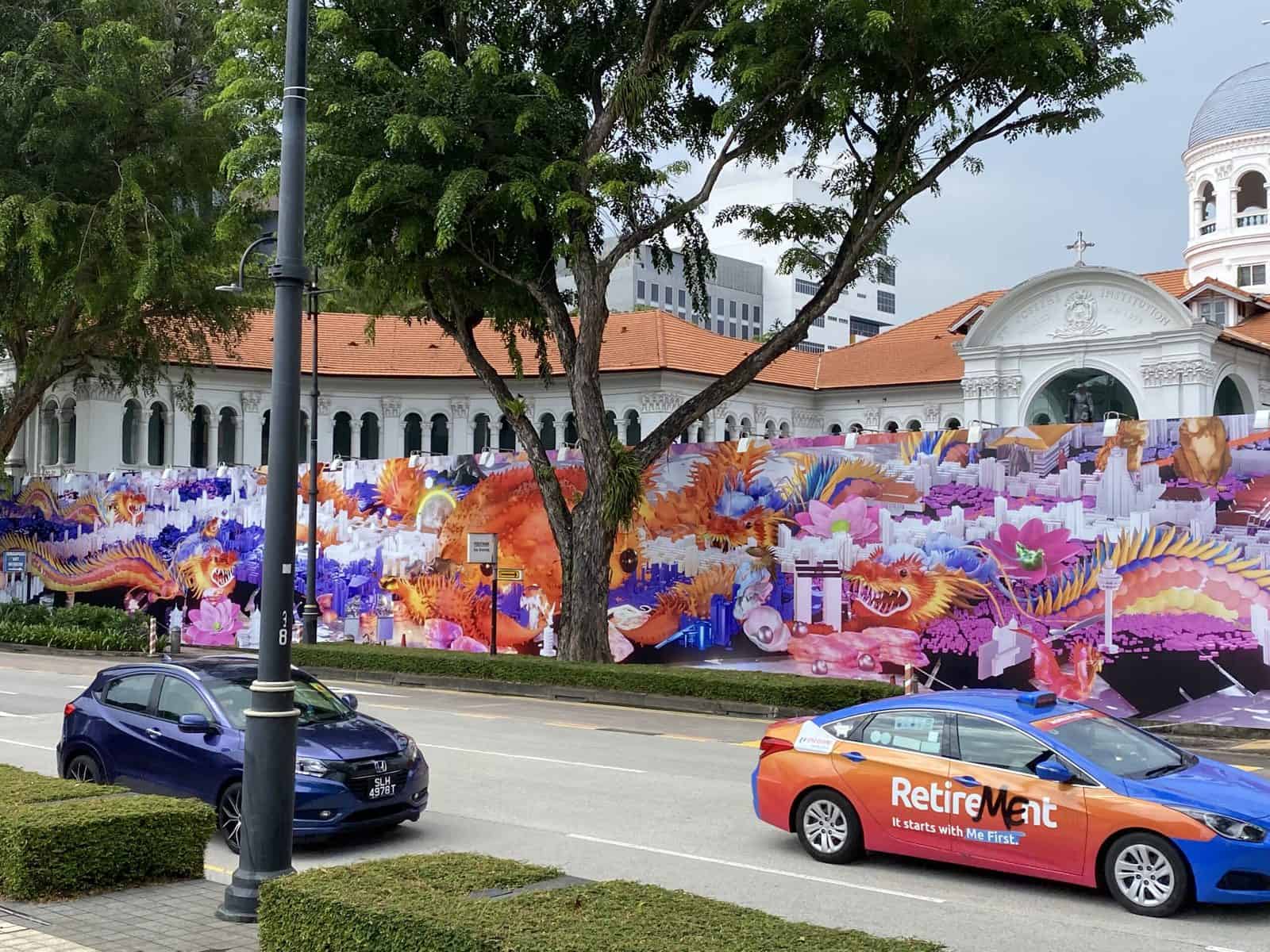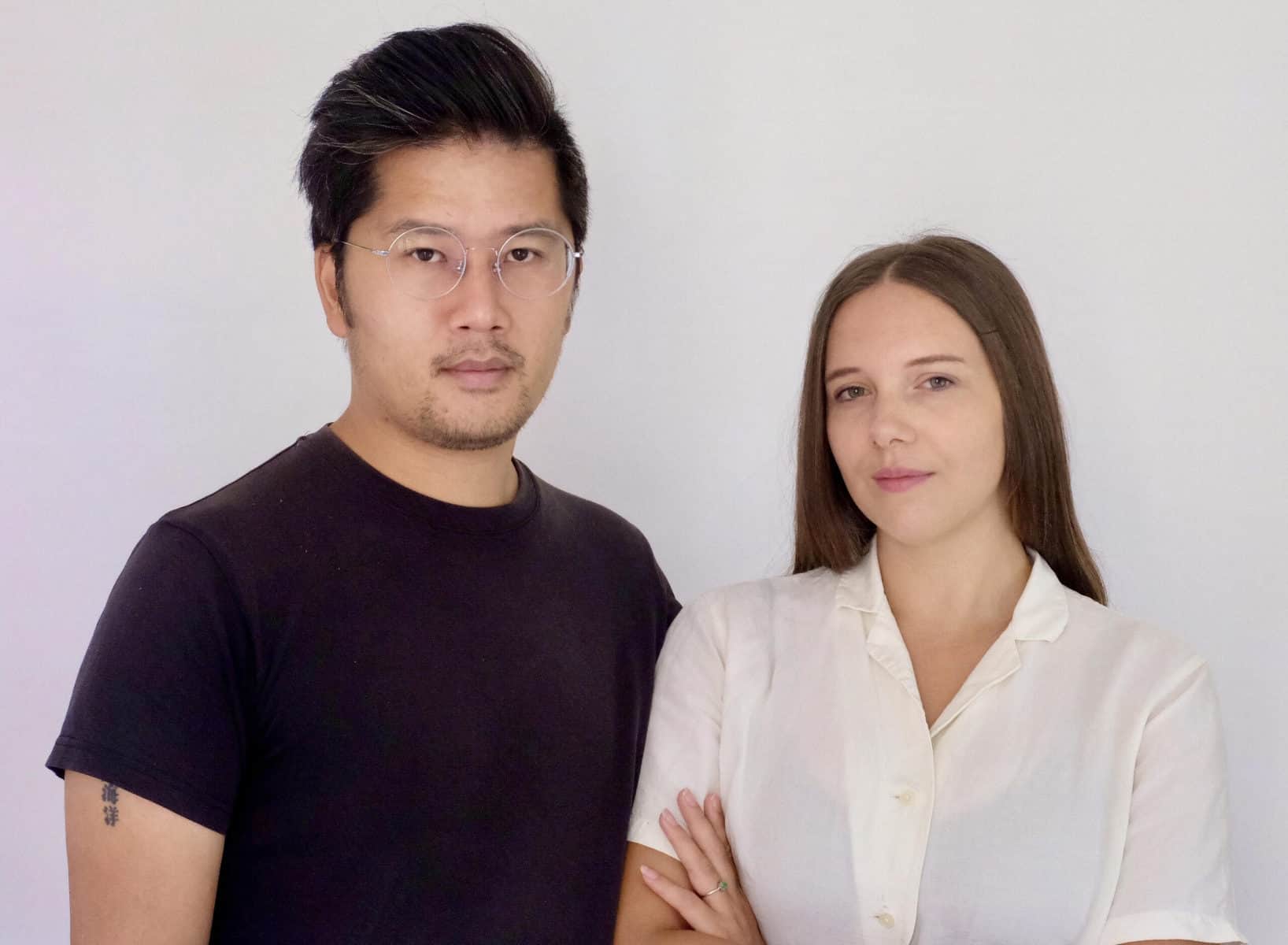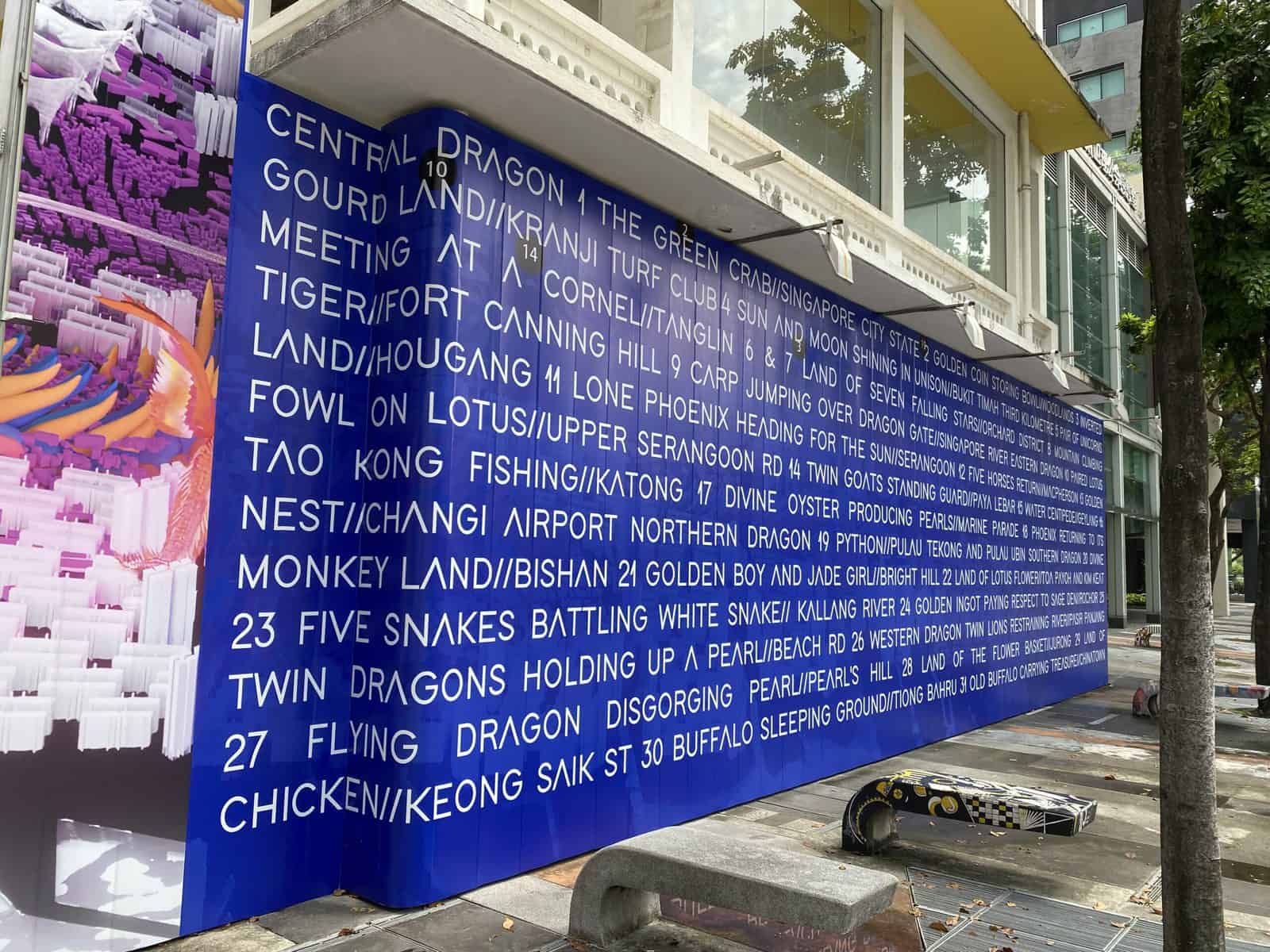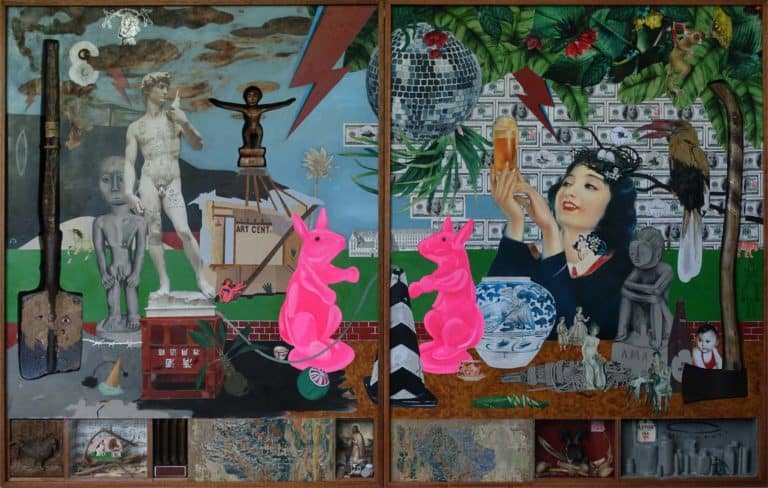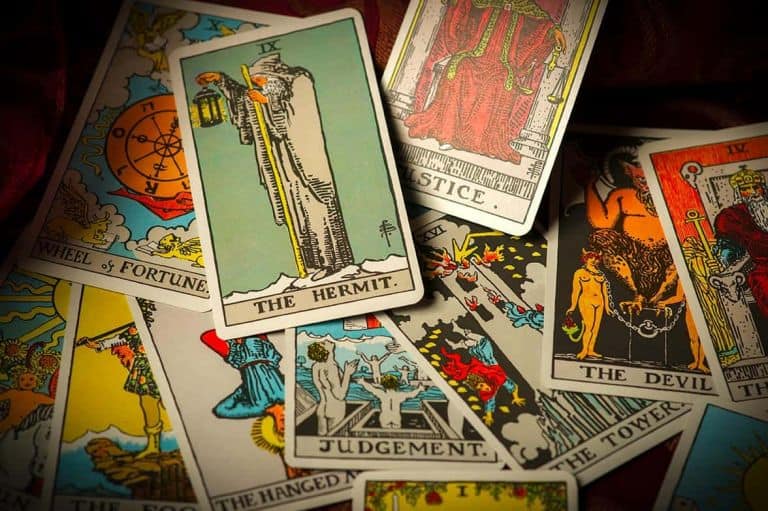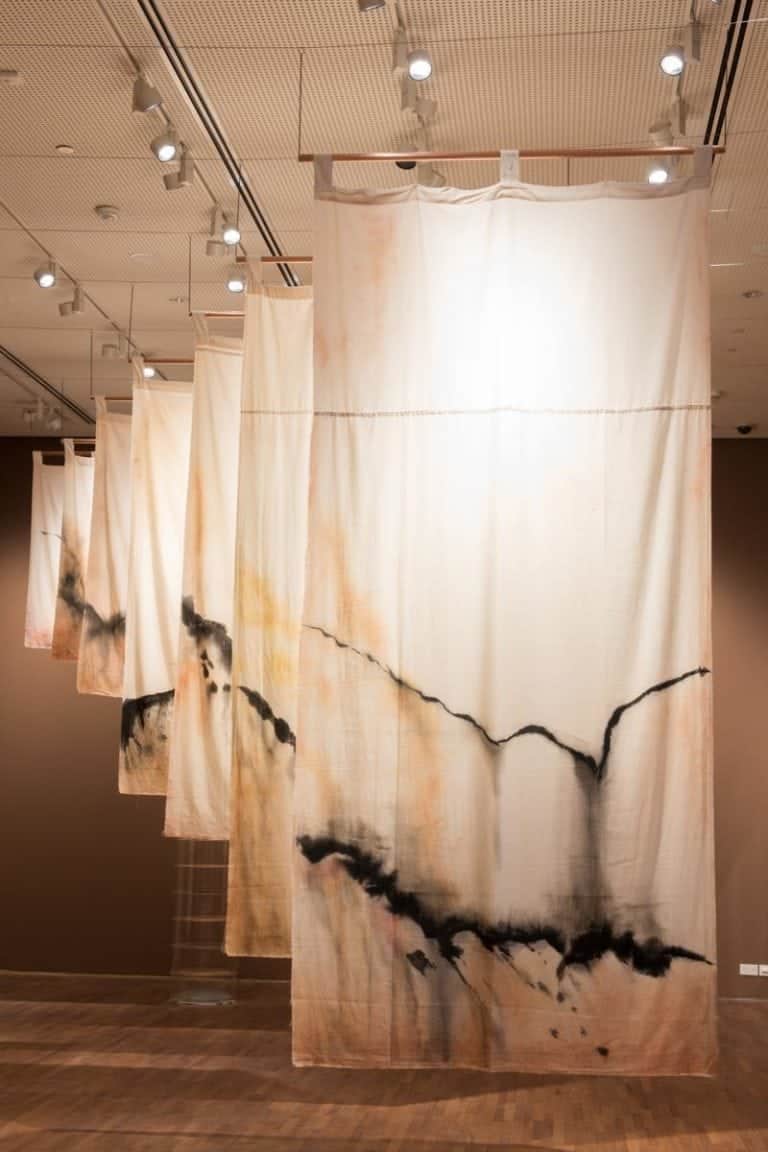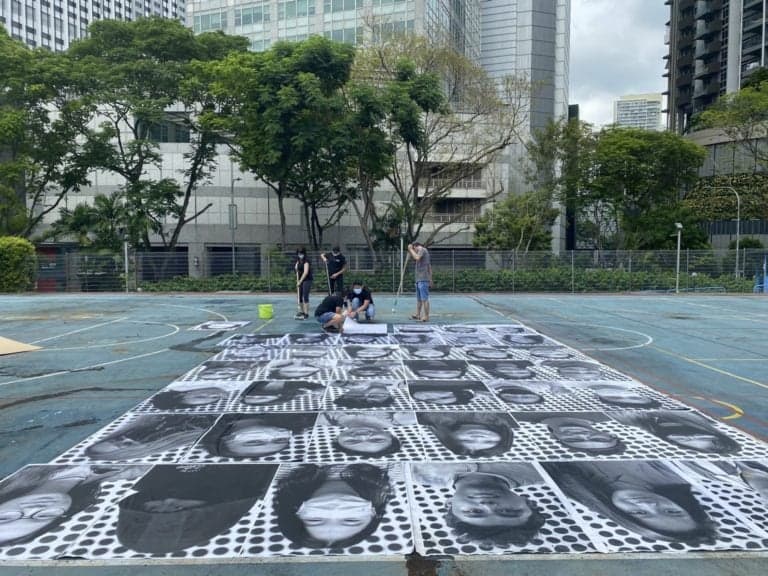My first encounter with The Green Crab was from right across the bustling Bras Basah Road. Amid a constant stream of pedestrians scurrying past me and cars pushing 80km/h on the narrow 4-lane street, I felt the gaze of an unblinking pair of beady eyes.
These eyes, possessing a certain gleam at their centre, belong to a jumbo fiery crab nestling cosily and centrally within the vast landscape standing in place of Singapore Art Museum’s (SAM) temporary hoarding.
What followed without warning is an uninterrupted unfolding of fantastical colours and imagery of non-human entities that plays out as hallucinatory visions at first. The collective behind The Green Crab, Zheng Mahler labelled this visual experience a “hypercolour grotesquerie.” They also used this term to describe the aesthetic of Chinese theme parks like our very own Haw Par Villa and Tiger Balm Garden in Hong Kong (where the art and anthropology collective is based).
Singapore has been regarded by critics as culturally and architecturally artificial in its post-independence prioritisation of ‘westernising’ to attract American and European capital over preserving its cultural roots. Thus, by having The Green Crab refer to the aesthetics of Chinese theme parks and gardens, Zheng Mahler raises questions about our nation’s authenticity and artifice, and whether such judgements should be solely tied to what the state decides to conserve or construct.
A Closer Look
The overall design of the map was determined by two predominant styles of Classical feng shui, which were thought to maximise Singapore’s prosperous energy.
In feng shui, it’s believed that positioning four celestial guardians representing different compass directions — Black Tortoise (North), Azure Dragon (East), Crimson Phoenix (South), and White Tiger (West) — protects Singapore’s landscape. You can spot some of these creatures in the work too. This follows the teachings of the Form School, one feng shui‘s multiple schools.
Referencing the Compass School, HDB flats — resembling each of the 8 trigrams of the Luo Pan’s (feng shui compass) centremost ring — are positioned across the landscape. Subsequently, over 50 chosen significant feng shui locations were added.
As for the title, the “green crab” is an endearing nickname used to describe Singapore’s diamond-shaped landmass and lush greenery. However, the green crab’s jarring red appearance is Zheng Mahler’s way of reminding us that Singapore’s vision of a garden city necessitated the removal of natural forested areas. This raises questions about whether Singapore is ultimately a ‘fake’ or ‘sanitised’ green city, albeit lush and abundantly so.
The collective added that the vibrant red crab also emphasises the importance of Singapore’s red ‘dragon vein.’ Running through the island’s centre (from Yishun, through Bishan to the Marina Barrage), some believed that this ensured Singapore’s good luck and success.
A Speculative Approach
Zheng Mahler revealed that their original plans for the hoarding had been set aside due to travel restrictions. This hampered their usual approach to art-making, which usually involved gathering first-hand empirical evidence.
Instead, Zheng Mahler depicted Singapore through the collective’s “distorted lens of (Hong Kong) that (they) know well” and their fascination with certain “rumours and second-hand sources” about Singapore’s urban development, offering a more speculative take on the project.
Working with disproportionate dimensions of the hoarding posed a practical challenge. Hong Kong-based Singaporean architectural historian, Ian Tan, whom the art duo collaborated with on this project, suggested for the work to feature a scroll-like depiction of Singapore’s coastline.
Inspired by the maritime sections of Ming dynasty’s admiral Zheng He’s Mao Kun map, this ingenious suggestion reflected Ian’s genuine understanding of the collective — especially as the name ‘Zheng Mahler’ alludes to Zheng He’s impressive naval expeditions.
The result was a wide-angle representation of Singapore’s highly organised urban landscape, hemmed in by the towering dunes of Johor and Sumatra at the far edges of the hoarding, which viewers might find peculiar.
Already, the map presents itself as much more than a striking addition to the public realm or a neutral navigational tool. It is also an abstract visualisation of each collaborator’s trajectory and interests within the work.
Working Collaboratively
The collaboration between Zheng Mahler and Ian was complementary but also proved intense due to their unfamiliarity with Singapore’s folklore and feng shui. They began by consulting Chief Geomancer Master Tan Khoon Yong’s publication, The Secrets of The Five Dragons – Feng Shui and Singapore’s Success, as it provided detailed feng shui readings of various topographical features of Singapore’s major districts.
From here, Zheng Mahler sourced anecdotes, while Ian pinpointed their corresponding location based on his local understanding of Singapore’s infrastructural developments over the years.
This “semiotic interplay between feng shui interpretation and architectural history”, as Ian indicated, became the basis for the selection of over 50 neighbourhoods and locales represented on the map. Just as his entrenched beliefs of Singapore as a “tabula rasa” (blank slate) were challenged during this process, this freshly plotted version of Singapore might leave the viewer with a sense of estrangement, familiarity, and reorientation.
Final Thoughts
I looked back at the work along Bras Basah Road once more and realised that I had overlooked its immediate surroundings. The red crab nestles among trees, street lamps and road signage; and against the backdrop of the former classical style St Joseph’s Institution building. Perhaps, these overlapping ‘versions’ of Singapore will continue to corroborate, dispute, and build upon each other as our streets and buildings undergo further reinvention and revitalisation.
As Zheng Mahler insightfully remarks,
“Just because the ‘spiritual’ dimension is not visible to the (general) observer in a city like Singapore, does not mean it is not there.”
The map, both revelatory and obscure, lends visibility to the marginalised reality of Chinese metaphysical commitments that might have guided the state’s developmental pursuits.
To further understand how stories, beliefs and structures of the “past, present and speculative collide and mesh together” (as Ian puts it), viewers can consult Master Tan’s book to on their own learn more about the individual landmarks and anecdotes. The virtual version of The Green Crab is set to release later this year, so keep your eyes peeled for that!
____________________________________
The Green Crab is located at the hoarding around SAM’s building on Bras Basah and 8 Queen Street. It will be on show until 28 Aug 2022. Click here for more details.
Click here to learn more about Zheng Mahler.

